When I was new to learning Darning Stitch, I heard grandma mumbling ‘Darning Cotton.’ I was confused! I thought, what is it? I asked Grandma if it was some kind of fabric that was suitable for darning stitching. 🤔
Grandma laughed and said, no, it is not a fabric.
Cotton
Darning cotton is the thread that is commonly used for darning stitches. And that thread is commonly made from cotton. That’s why I call it Darning Cotton.
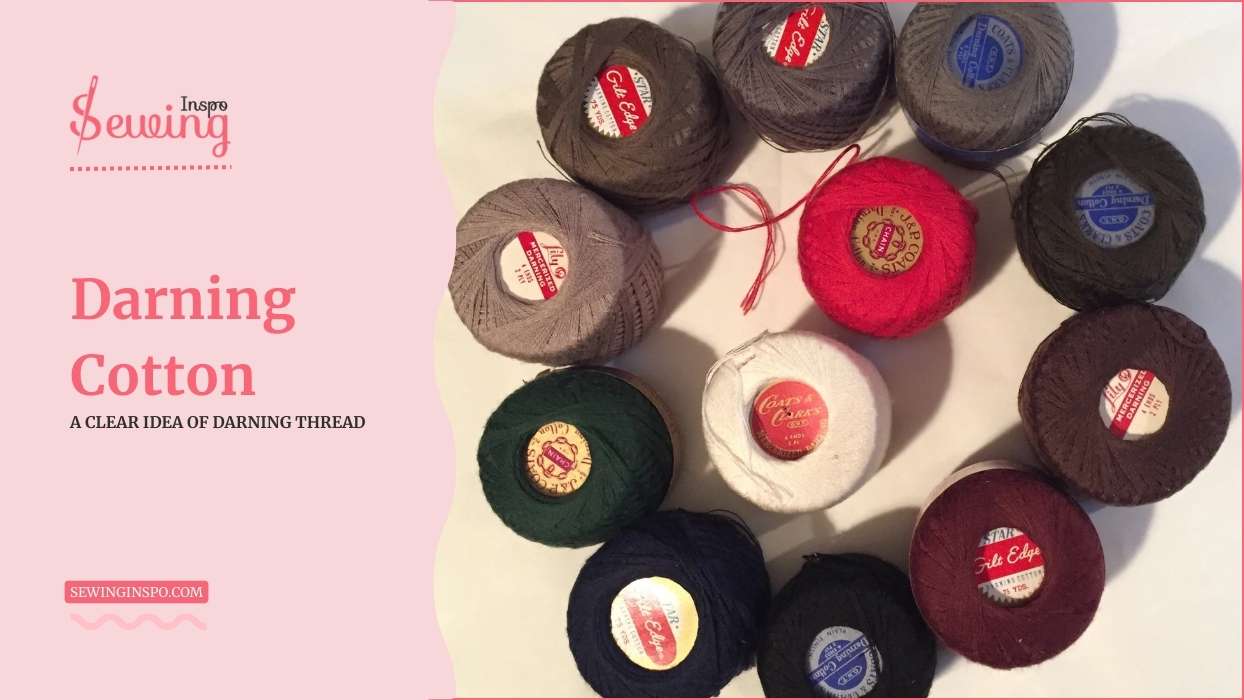
Oh, I see. Tell me more about it so I can share it with sewinginspo readers. Let’s get you know what is darning thread.
Table of Contents
What Is Darning Cotton?
Darning cotton is a special thread designed explicitly for mending and repairing fabrics. It is thinner and more durable than regular sewing thread. cotton darning thread makes it perfect for fixing holes in socks, sweaters, or other textiles without adding bulk.
Think of it as the best mending material—
It blends beautifully with the fabric, so your repairs look seamless and neat. Whether fixing worn-out areas or strengthening weak spots, darning cotton is a must-have in your sewing kit. It’s a lifesaver for giving your favorite clothes a second chance!

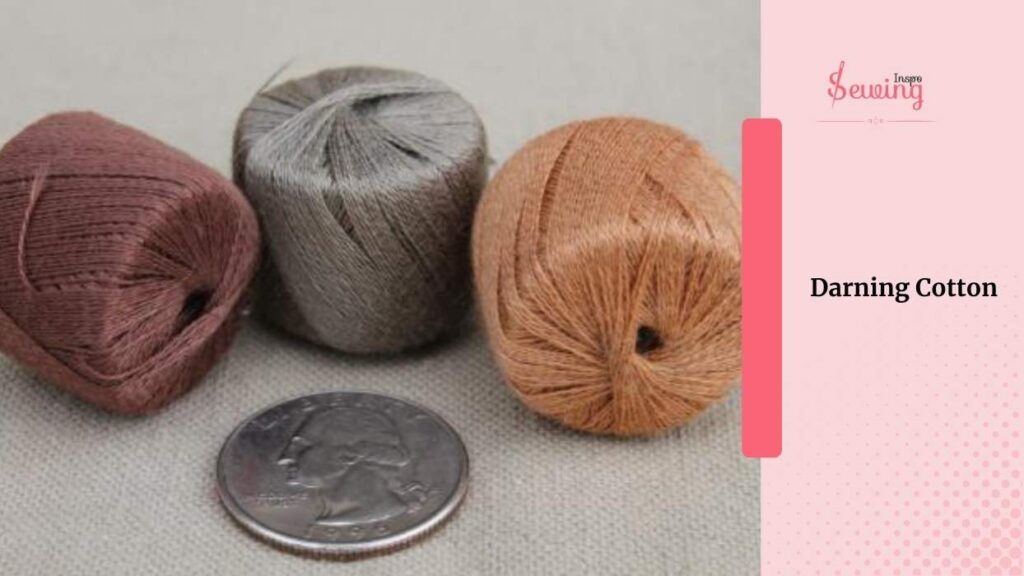
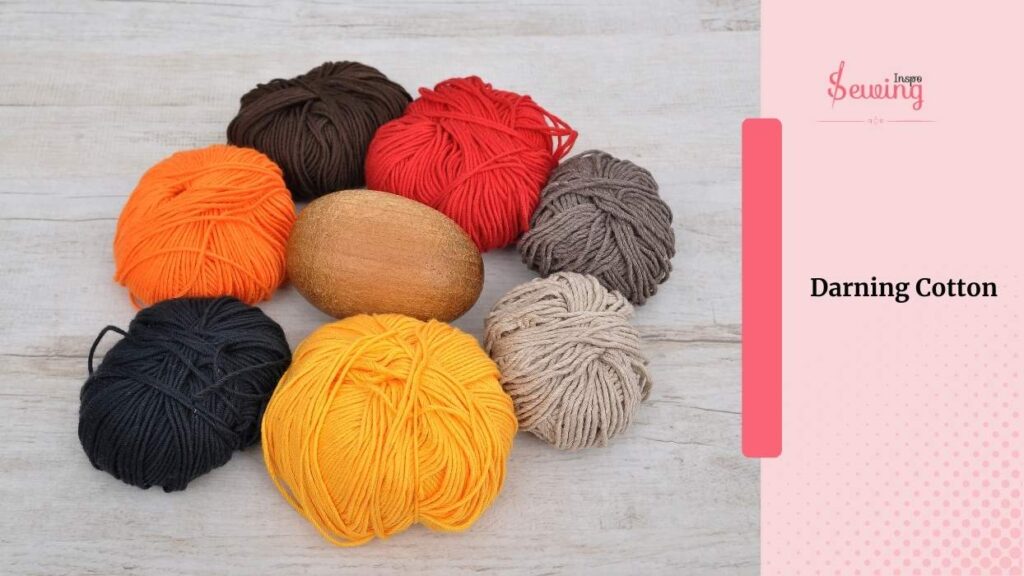
What Kind Of Thread To Use For Darning?
Wondering what is darning thread? Well,
Embroidery and yarn are the best kind of thread to use for darning. But still, there are many kinds of threads. So, here is what thread I would like to use the most,
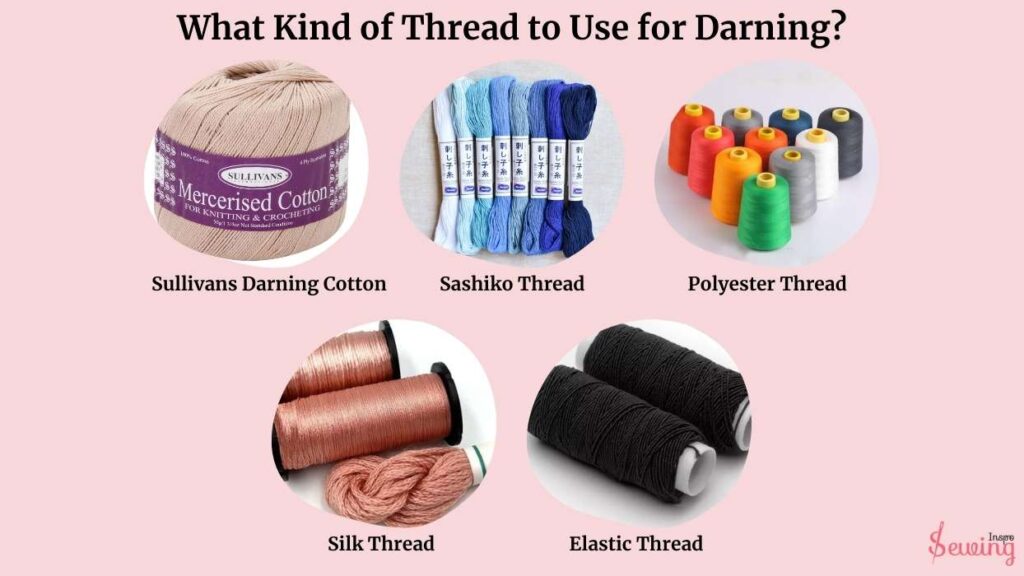
Sullivans Darning Cotton
Now, darning cotton is my go-to for lightweight fabrics like socks, shirts, or old tablecloths. It’s smooth, strong, and slightly thicker than regular sewing thread, so it’ll withstand wear and tear without being too bulky. This is perfect for an invisible darn & twill darning stitch.
stick to thread sizes between 30 and 50 for everyday mending. This size makes the perfect darning cotton thread. This is perfect for darning patterns.
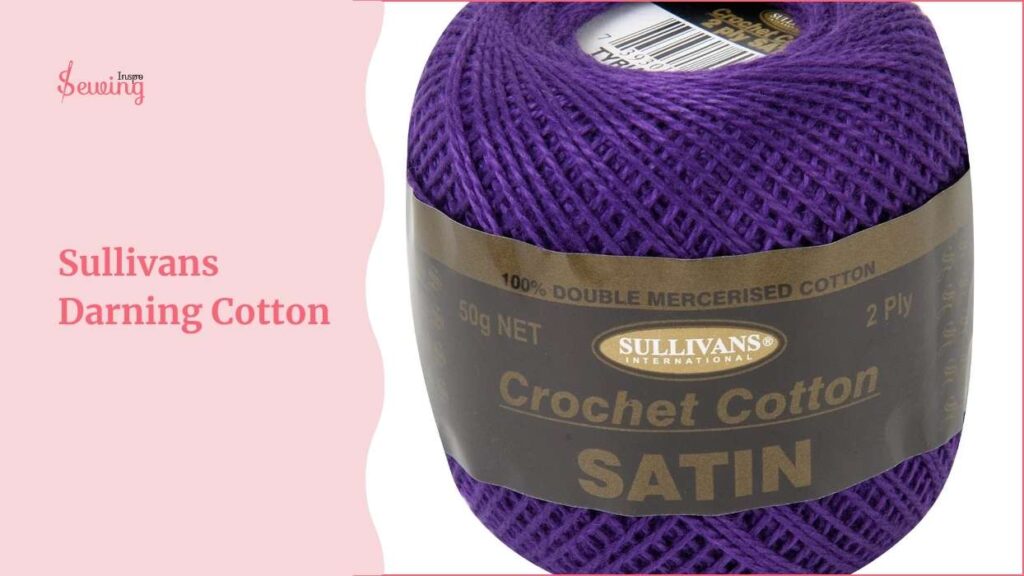
That’s strong enough for most jobs. But if you’re working on something delicate, like a fine blouse or a fancy handkerchief, go for a thinner thread, maybe size 60 or higher. It’ll blend right in and won’t make the fabric feel stiff. But I think this is the perfect darning cotton.
Sashiko Thread
Oh, darling, the sashiko thread is a lifesaver for fixing your cosy jeans. This is perfect for a Japanese darning stitch.

It’s soft and warm, just like the original fabric, and it gives a natural finish. Choose a thread thickness that matches the weight of the fabric you’re fixing. You can also use this for the darning patch.
Use a thin wool thread for fine knits, like a lightweight cardigan. But go with something thicker for those chunky knit scarves or heavy blankets. I even use this for Woven darn patterns.
And don’t forget to use a needle with a large enough eye to fit the wool through. No sense struggling with a tiny needle! These are the perfect darning cotton socks.
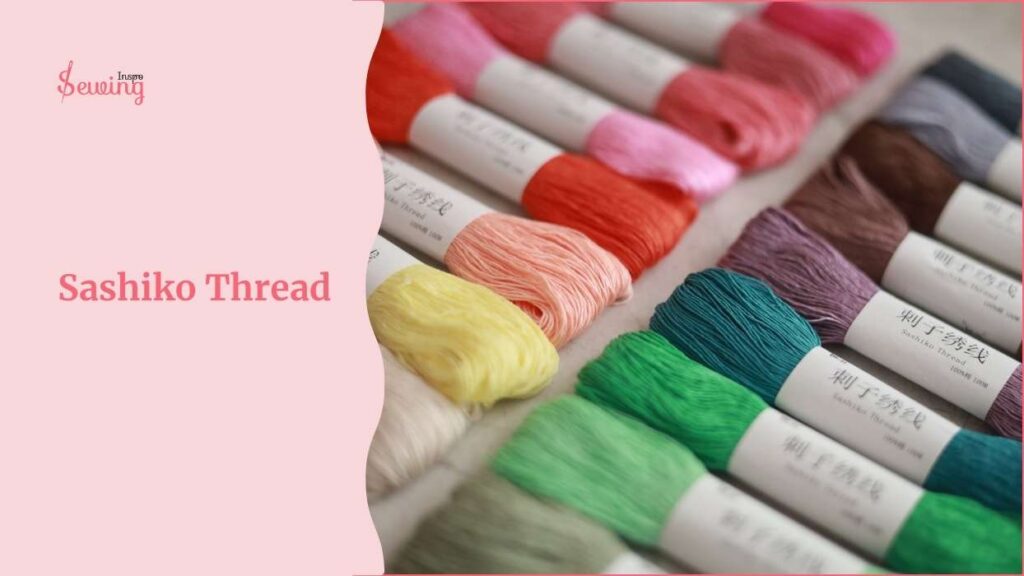
Polyester Thread
Now, polyester thread is the tough one in the family. It’s the best choice for things that get a lot of wear, like work pants, backpacks, or even outdoor gear. This is perfect for scotch darning stitch, too.
For most fabrics, a thread size of 40 to 60 will do the trick. This is the perfect darning thread for socks.
It is strong and durable but not too thick. If you’re fixing something lightweight, like a synthetic blouse, use a finer thread, maybe size 70 or higher. So, it doesn’t pucker. This thread is like the workhorse of your sewing kit, reliable and hardworking.
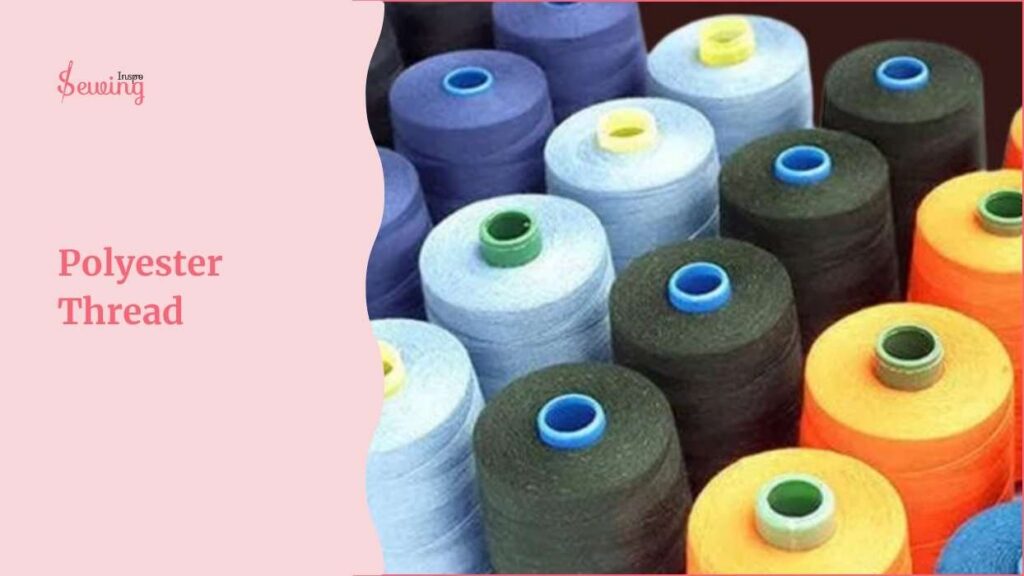
Silk Thread
It’s what you’ll want for mending delicate or luxurious fabrics like silk scarves or a fancy dress. Go for a thinner thread, around size 50 or 60. I use this thread whenever i practice darn in needlepoint. This thread is perfect for a darning loom, too.
It’ll glide through the fabric like butter and blend in beautifully. Silk thread has a lovely sheen, so it’s perfect if you want the repair to look almost invisible. And remember, take your time with silk; it’s delicate, just like the fabric it’s meant for.
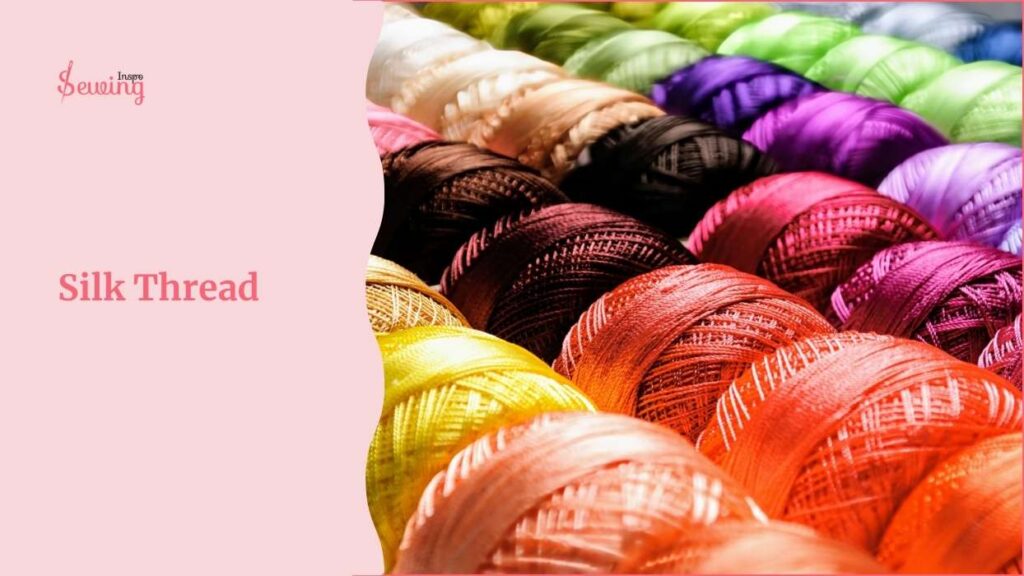
Elastic Thread
Now, the elastic thread is what you need for stretchy fabrics think leggings, swimwear, or even some sportswear. It’s thicker than normal thread. But don’t let that fool you. When you sew with it, it stretches with the fabric and snaps right back into shape.
It is perfect for mending areas that need to be moved. Sew slowly and ensure your needle can handle it without breaking. This is also perfect for hiding moth holes.
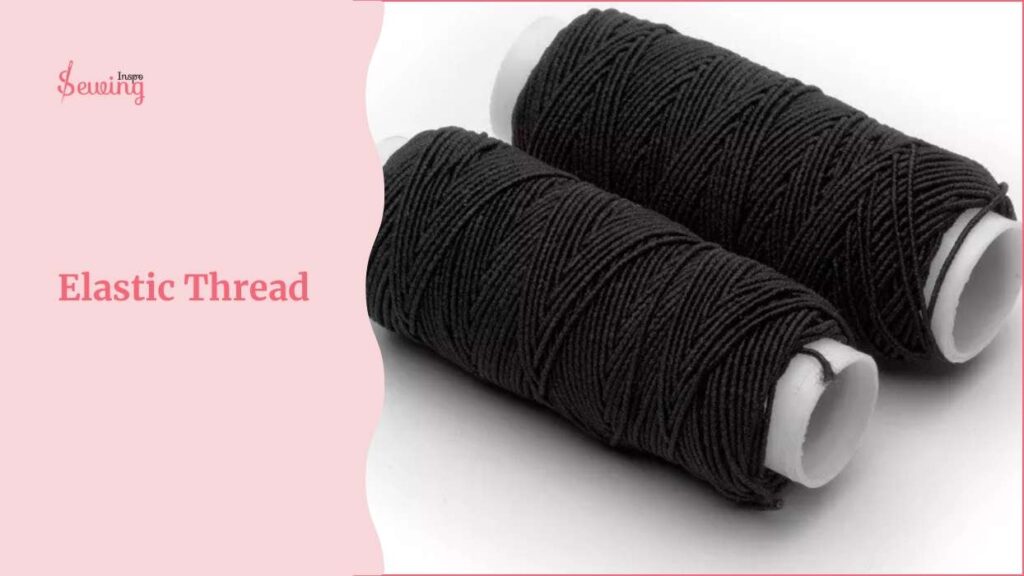
Those are the threads I like to use, but my grandma used to say,
Remember, darling, it’s not just about the type of thread but also about matching the thread to the fabric and the job at hand. Always test a small section first if you’re unsure. It’s better to take a little extra time than to redo the whole thing later.
List Of Darning Cotton And Thread
So basically, the list of darning cotton is,
- Sullivans cotton
- Sashiko Thread
- Polyester Thread
- Silk Thread
- Elastic Thread
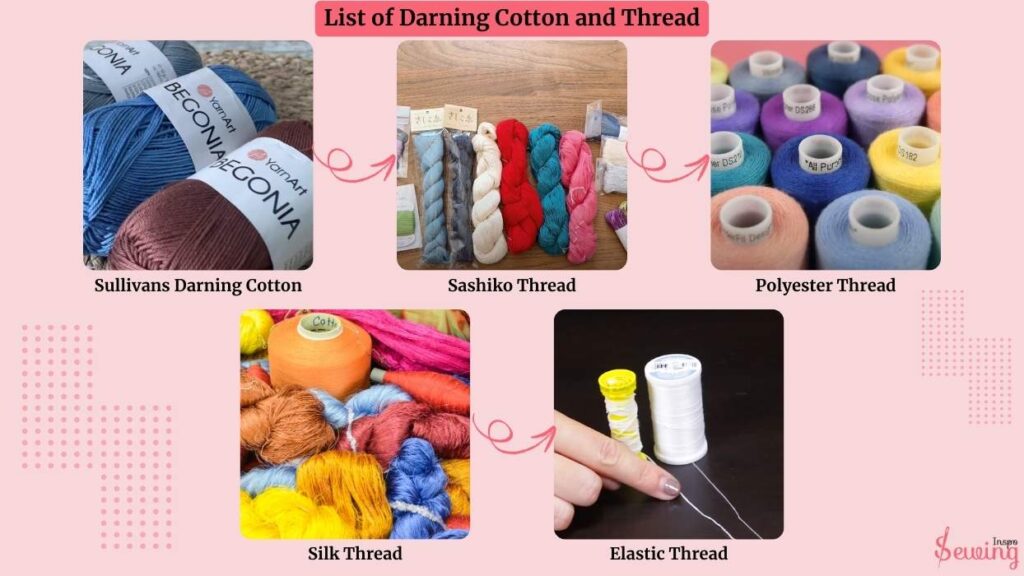
Which One Is The Best Thread For Darning?
You can use all the darn thread to darn the damaged fabric. But it’s natural to think which is best among them, right? The best thread for darning depends on what you’re fixing.
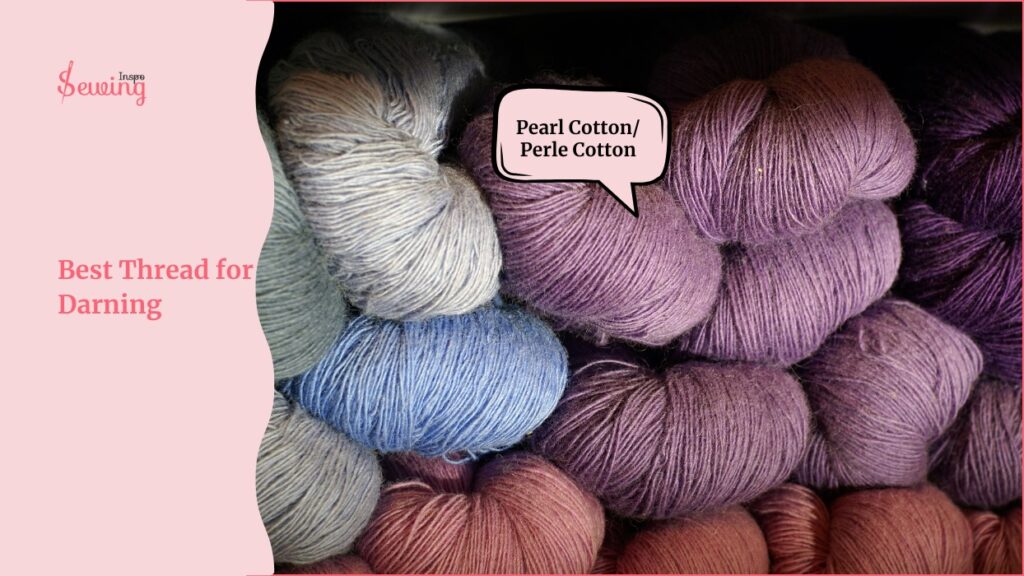
But if you sit to think, then,
Sashiko thread is great for cotton and wool, giving a natural, flexible finish, but it’s not ideal for stretchy fabrics. Polyester thread is the strongest, perfect for workwear and outdoor gear but can feel stiff.
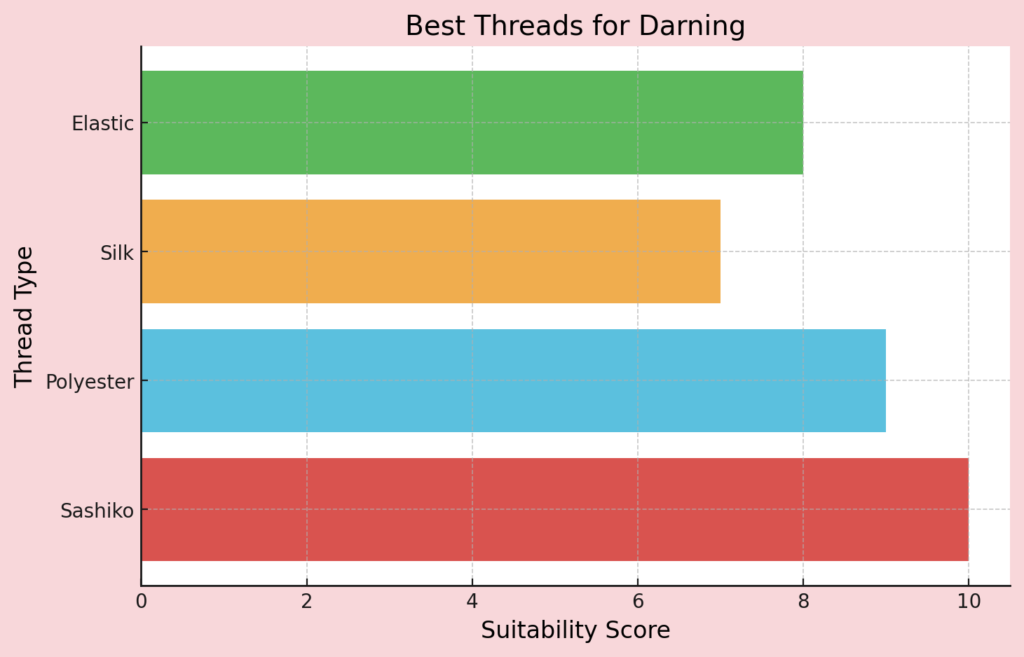
And,
If you’re mending delicate fabrics, silk thread blends in beautifully but needs gentle handling. Elastic thread is the way to go for stretchy fabrics like leggings or swimwear, as it moves with the fabric.
Overall, sashiko darning thread is a great choice, but polyester is the most durable for high-wear areas. Always pick a thread that matches your fabric for the best results! I will choose Sasihiko as the best thread for darning over any thread.
Outro
Oh yeah, those are the darning cottons I learned to use from my grandma. The key is matching the thread’s size, thickness, and texture to your fabric and the type of repair you need. And don’t forget you can get creative with embroidery thread or go practical with polyester for heavy-duty repairs.



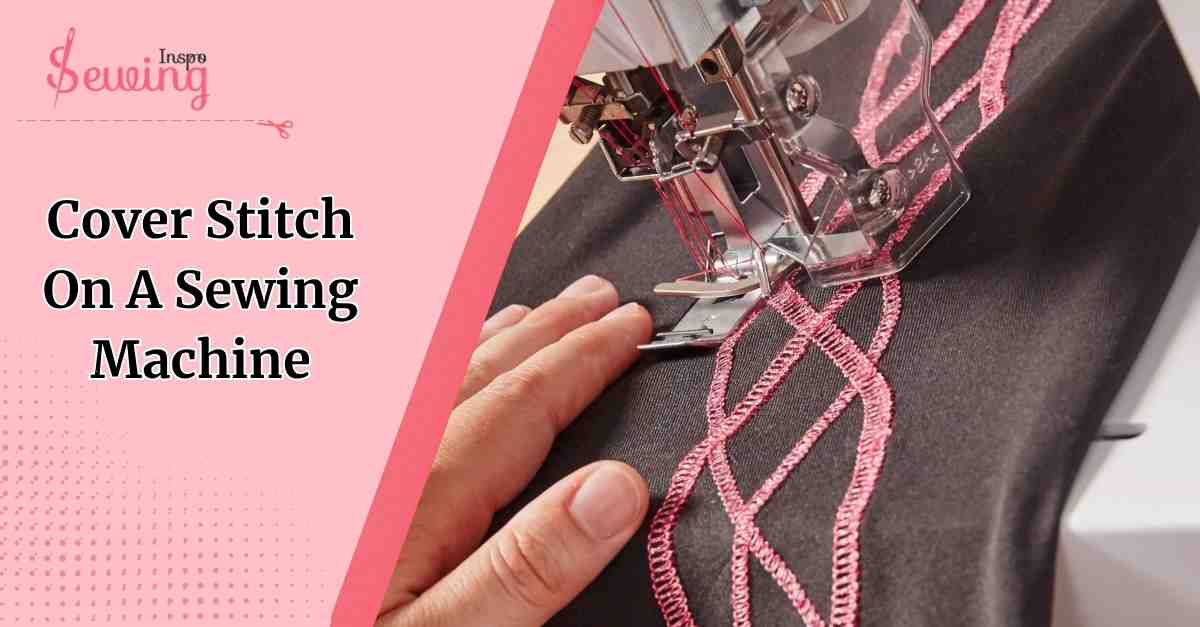
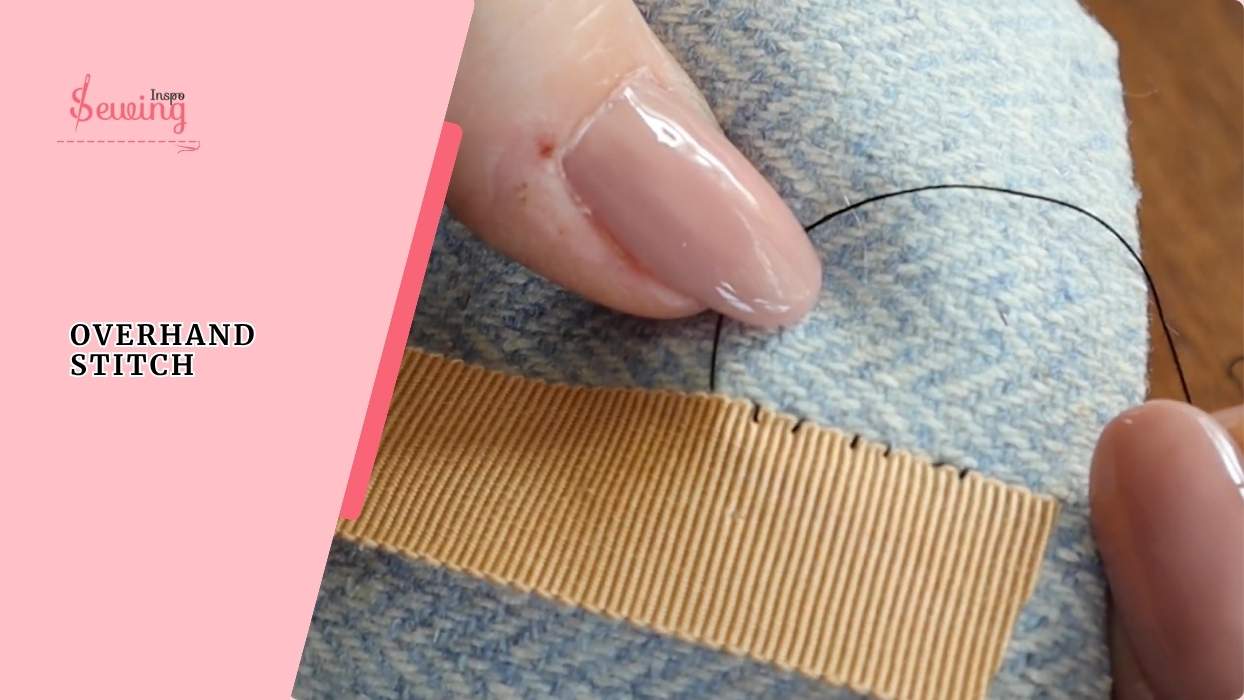
Leave a Reply